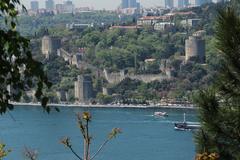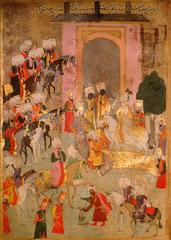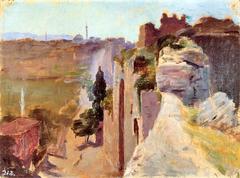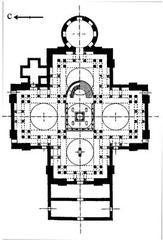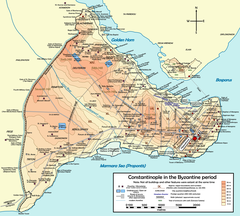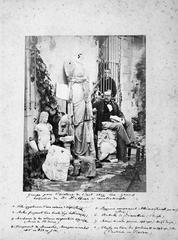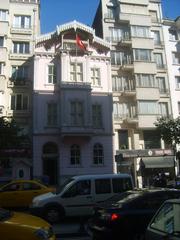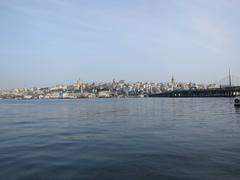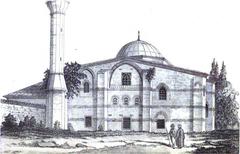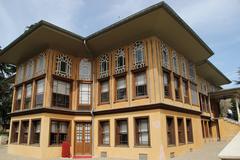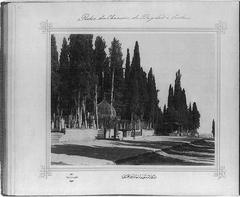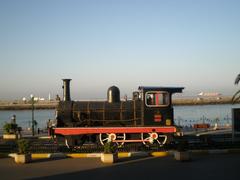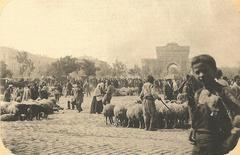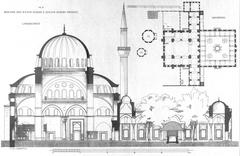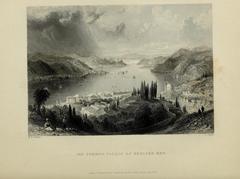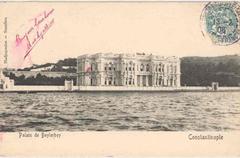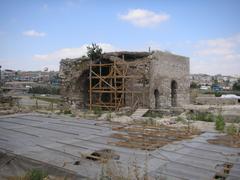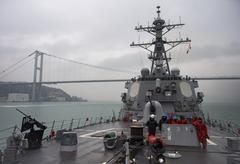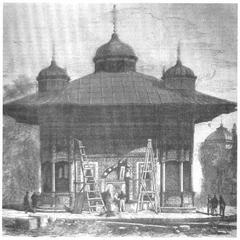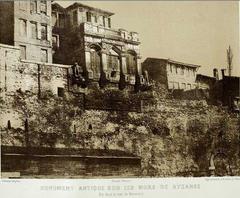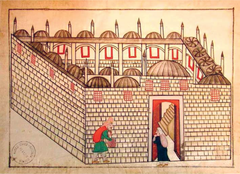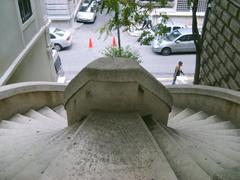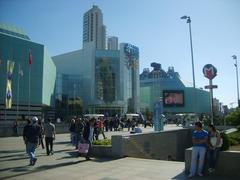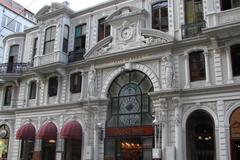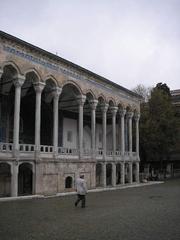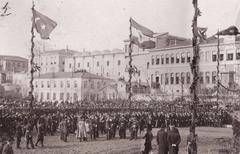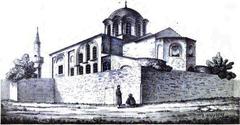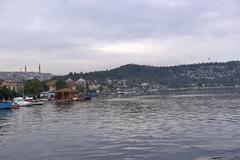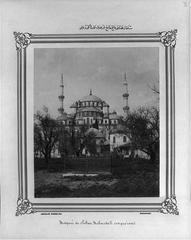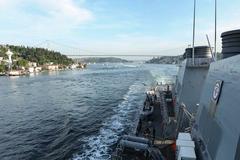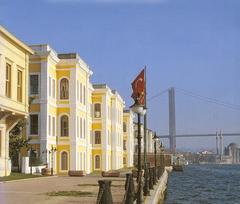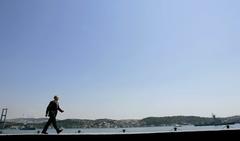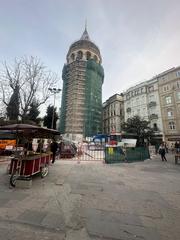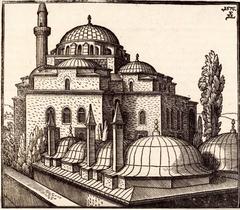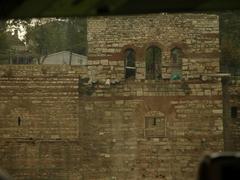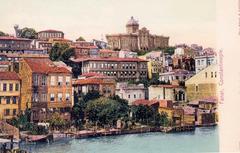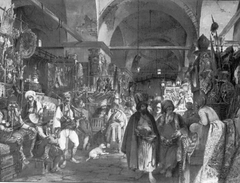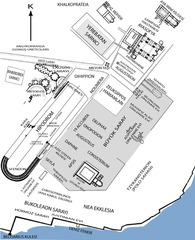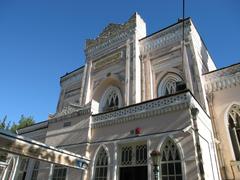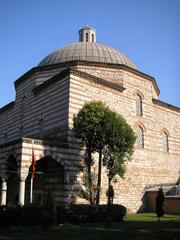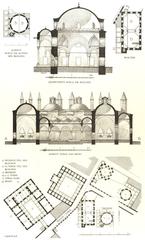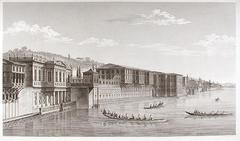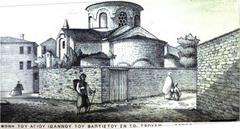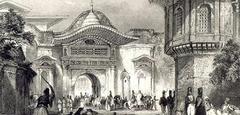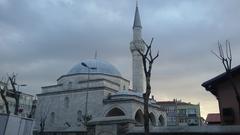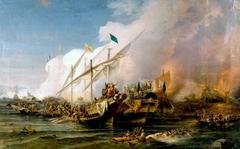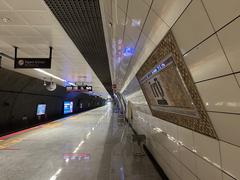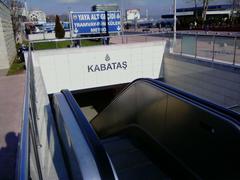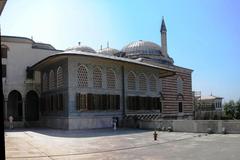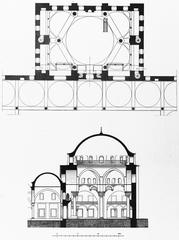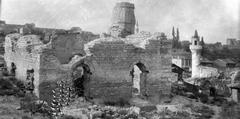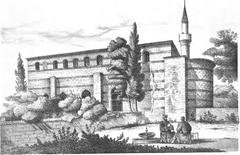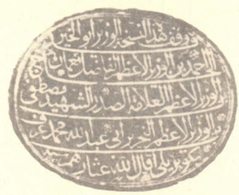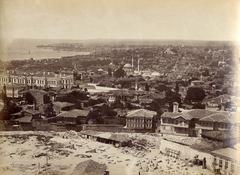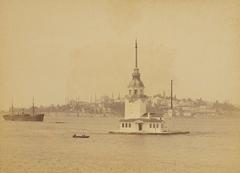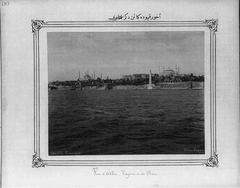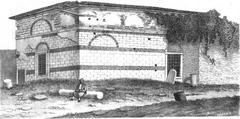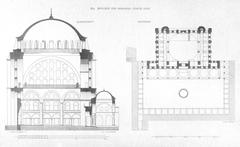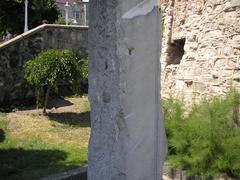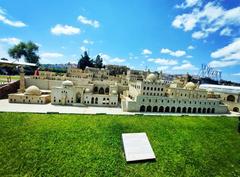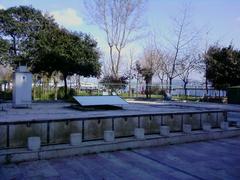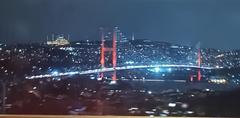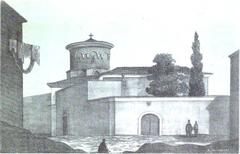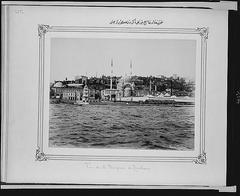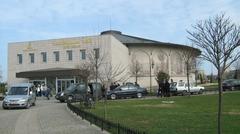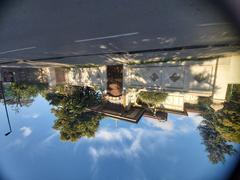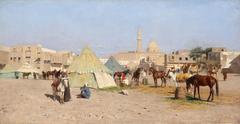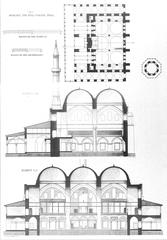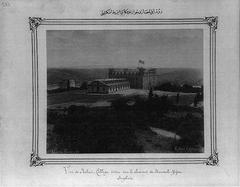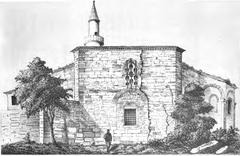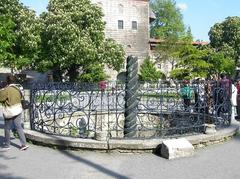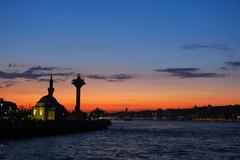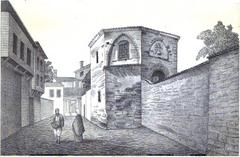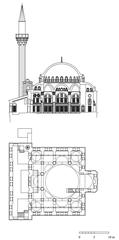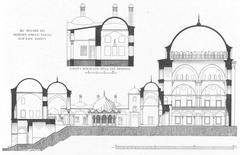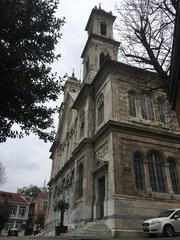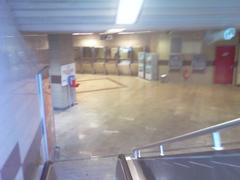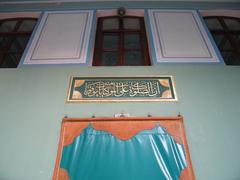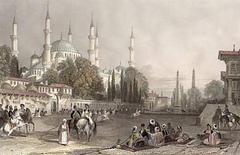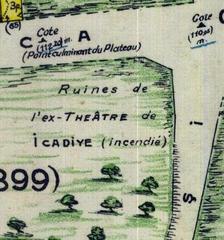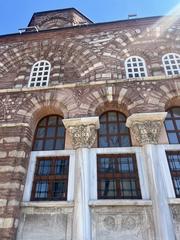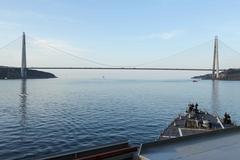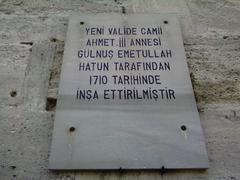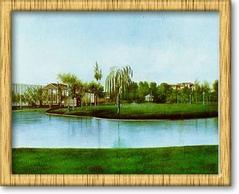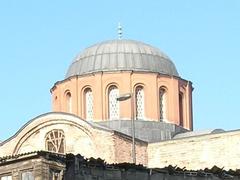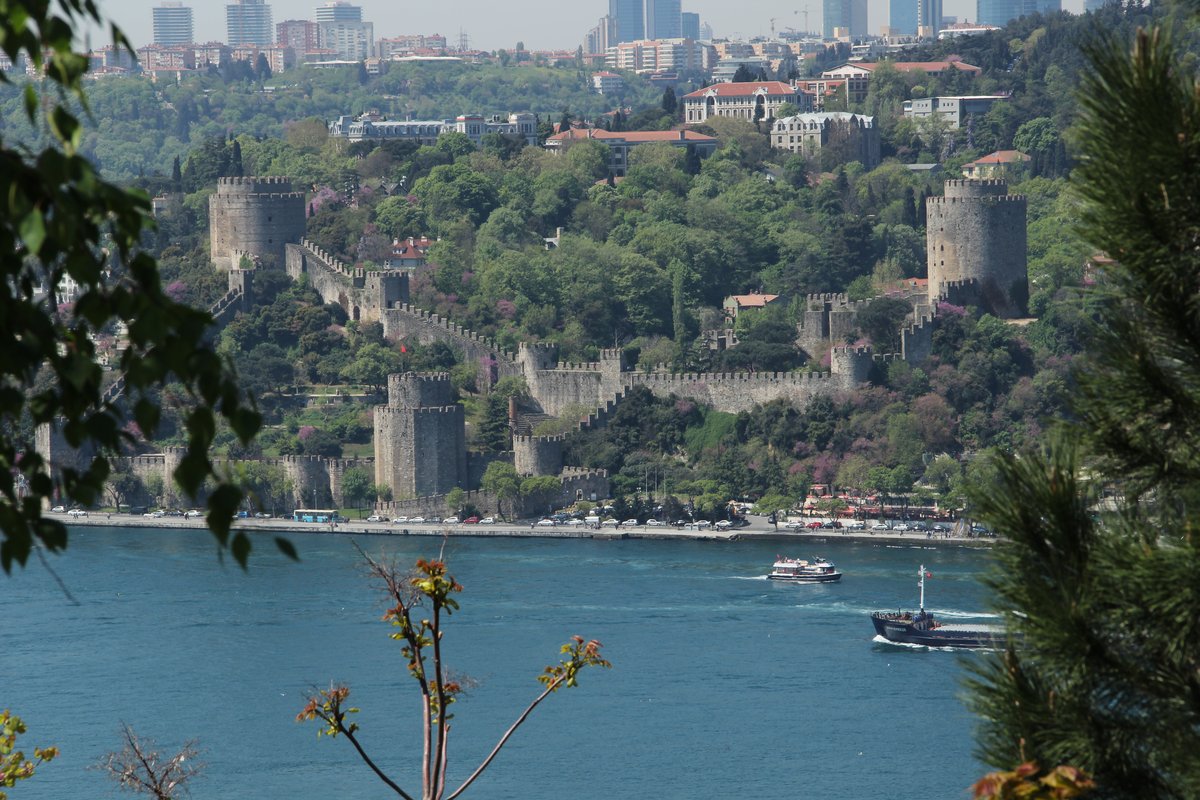
Rumelihisarı Besuchszeiten, Tickets & Kompletter Leitfaden zur historischen Festung von Istanbul
Datum: 14.06.2025
Einleitung
Rumelihisarı (Festung Rumelien) ist eines der ikonischsten historischen Wahrzeichen Istanbuls und verkörpert die militärische Genialität, den architektonischen Ehrgeiz und die vielschichtige Geschichte der Stadt. Diese imposante Festung wurde 1452 von Sultan Mehmed II. in nur vier Monaten erbaut und war entscheidend für die osmanische Eroberung Konstantinopels. Heute ist sie sowohl ein Zeugnis einer transformativen Ära als auch ein lebendiger Kulturtreffpunkt mit Blick auf den Bosporus. Dieser umfassende Leitfaden beleuchtet die Ursprünge, Architektur, Bedeutung und praktischen Besucherinformationen von Rumelihisarı – damit Ihr Besuch bereichernd und unvergesslich wird. Offizielle Aktualisierungen und Ressourcen finden Sie unter rumelihisari.info, Istanbul Clues und afar.com.
Inhalte
- Historischer Überblick und strategische Bedeutung
- Bau und architektonische Merkmale
- Rolle bei der Eroberung Konstantinopels
- Nutzung und Erhaltung nach der Eroberung
- Besucherinformationen: Öffnungszeiten, Tickets und Barrierefreiheit
- Visuelles Erlebnis, Fotografie und Multimedia
- Kulturelle Veranstaltungen und Nachbarschaftsleben
- Anreise und Reisetipps
- Häufig gestellte Fragen (FAQ)
- Fazit: Planen Sie Ihren Besuch
- Quellen
Historischer Überblick und strategische Bedeutung
Rumelihisarı wurde auf der europäischen Seite des Bosporus am engsten Punkt – direkt gegenüber von Anadolu Hisarı – errichtet, um diesen entscheidenden Seeweg abzusperren (rumelihisari.info; afar.com). Sultan Mehmed II. beauftragte den Bau der Festung als zentrales Element seines Feldzugs zur Eroberung Konstantinopels, um jegliche Hilfe für die byzantinische Hauptstadt über das Schwarze Meer zu unterbinden. Ihre Position ermöglichte es den Osmanen, jeglichen Schiffsverkehr zu überwachen und zu blockieren und die Stadt so zu isolieren.
Bau und architektonische Merkmale
Schneller Bau und Arbeitskräfte
Bemerkenswert ist, dass Rumelihisarı von März bis August 1452 unter der direkten Aufsicht von Mehmed II. fertiggestellt wurde, was nur vier Monate dauerte (rumelihisari.info). Eine Arbeitskraft von über 1.000 Handwerkern, Arbeitern und Hilfspersonal, mit Materialien aus dem gesamten Reich, ermöglichte diese Leistung. Jeder der drei Haupttürme wurde einem anderen Wesir zugeordnet, während der Sultan alle seewärts gelegenen Abschnitte überwachte.
Festungsanlage und defensive Innovationen
- Drei Haupttürme: Halil-Pascha-, Saruca-Pascha- und Zaganos-Pascha-Turm, jeder bis zu 28 Meter hoch und mit bis zu 7 Meter dicken Mauern (The Other Tour).
- Verbindungsmauern: Verbinden die Türme auf 250 Metern Länge. Sie sind mit 13 kleineren Bastionen und fünf verstärkten Toren ausgestattet.
- Konstruktionsanpassungen: Die Festung folgt den natürlichen Hügeln, bietet Panoramaaussichten und verbesserte Verteidigung (Istanbul.tips).
- Innenausstattung: Im Inneren finden Sie Überreste von Zisternen, eine rekonstruierte Moschee und geheime Gänge für Truppenbewegungen (Istanbuljoy).
- Militärische Anpassungen: Die dicken Mauern und strategischen Geschützstellungen spiegeln den Übergang zur frühen modernen Belagerungskriegsführung wider (Muze.gen.tr).
Rolle bei der Eroberung Konstantinopels
Die Fertigstellung von Rumelihisarı ermöglichte den Osmanen eine effektive Seeblockade während der Belagerung Konstantinopels im Jahr 1453 (rumelihisari.info). Ihre Kanonen schreckten ab und zerstörten Schiffe, die versuchten, die Byzantiner zu unterstützen, besiegelten das Schicksal der Stadt und sicherten den Erfolg von Mehmed II.s Feldzug – ein Wendepunkt in der Weltgeschichte (afar.com).
Nutzung und Erhaltung nach der Eroberung
Nach der Eroberung blieb die Festung ein strategischer Militärstandort, der später als Zollstation, Gefängnis und Kaserne diente (Wikipedia). Trotz Schäden durch Erdbeben und Brände im Laufe der Jahrhunderte wurde Rumelihisarı wiederholt restauriert, insbesondere im 20. und 21. Jahrhundert, und 1960 als Museum und Kulturzentrum eröffnet (Istanbuljoy; Wikipedia).
Besucherinformationen: Öffnungszeiten, Tickets und Barrierefreiheit
- Öffnungszeiten: Normalerweise täglich von 09:00 bis 19:00 Uhr (April–Oktober) und von 09:00 bis 17:00 Uhr (November–März). Montags geschlossen wegen Wartungsarbeiten. Die Zeiten können variieren; immer vor dem Besuch bestätigen (Istanbul Clues).
- Tickets: Der Eintritt kostet ca. 6 Euro (2024), mit Ermäßigungen für Studenten und Kinder. Der Museum Pass Istanbul wird akzeptiert (Istanbul Clues); Tickets können am Eingang oder online gekauft werden.
- Barrierefreiheit: Aufgrund historischer Bausubstanz ist der Zugang für Besucher mit eingeschränkter Mobilität begrenzt – rechnen Sie mit steilen Treppen, unebenen Wegen und engen Gängen.
- Einrichtungen: Toiletten und ein kleines Café sind in der Nähe des Eingangs vorhanden. Führungen in mehreren Sprachen werden angeboten; Buchung im Voraus während der Hauptsaison wird empfohlen.
Visuelles Erlebnis, Fotografie und Multimedia
Rumelihisarı bietet spektakuläre Panoramablicke auf den Bosporus, die Fatih-Sultan-Mehmet-Brücke sowie die europäische und asiatische Küste. Die besten Fotospots sind auf den Türmen und entlang der Festungsmauern, besonders bei Sonnenauf- oder -untergang. Vor Ort und online verfügbare Ressourcen umfassen interaktive Karten, virtuelle Touren und Galerien mit beschreibenden Alt-Tags wie „Rumelihisarı Öffnungszeiten“, „Rumelihisarı Tickets“ und „Istanbul historische Stätten“.
Kulturelle Veranstaltungen und Nachbarschaftsleben
Das Freiluft-Amphitheater der Festung ist ein einzigartiger Veranstaltungsort für klassische Konzerte, Jazz, Theater und Festivals – besonders im Frühling und Sommer (2Istanbul). Das umliegende Viertel Rumelihisarı ist beliebt für seine historischen Straßen, Cafés am Bosporus und renommierten Frühstückslokale (Istanbul Clues). Die Gegend ist am Wochenende lebhaft; Besucher genießen Spaziergänge, Fischrestaurants und malerische Ausblicke.
Anreise und Reisetipps
- Mit dem Bus: Linien 22, 25E und 40T von Beşiktaş, Taksim oder Sarıyer halten in der Nähe der Festung.
- Mit der Metro: Nehmen Sie die Linie M2 bis Hacıosman, dann einen Minibus oder ein Taxi.
- Mit der Fähre: Steigen Sie in Bebek oder Arnavutköy aus für einen angenehmen Spaziergang oder eine kurze Taxifahrt.
- Mit dem Auto: Parkplätze sind begrenzt, besonders am Wochenende; öffentliche Verkehrsmittel werden empfohlen.
- Reisetipps: Tragen Sie festes Schuhwerk, bringen Sie Sonnenschutz mit und ziehen Sie Besuche am frühen Morgen oder an Wochentagen in Betracht, um Menschenmassen zu vermeiden.
Häufig gestellte Fragen (FAQ)
F: Was sind die Besuchszeiten von Rumelihisarı? A: Generell 09:00–19:00 Uhr April–Oktober, 09:00–17:00 Uhr November–März; montags geschlossen.
F: Wie viel kosten Tickets? A: Tickets kosten ca. 6 Euro (2024); Ermäßigungen verfügbar; Museum Pass Istanbul wird akzeptiert.
F: Ist Rumelihisarı für Menschen mit Behinderungen zugänglich? A: Die Zugänglichkeit ist aufgrund von Treppen und unebenem Gelände eingeschränkt; erkundigen Sie sich im Voraus nach Unterstützung.
F: Sind Führungen verfügbar? A: Ja, in mehreren Sprachen; Vorab-Buchung wird empfohlen.
F: Wann sind die besten Besuchszeiten? A: Frühling und Frühsommer bieten angenehmes Wetter und fallen mit Kulturveranstaltungen zusammen; Wochentage sind weniger überlaufen.
Fazit: Planen Sie Ihren Besuch
Rumelihisarı ist eine unverzichtbare historische Stätte in Istanbul, die reiche osmanische Geschichte, beeindruckende Architektur, kulturelle Vitalität und atemberaubende Ausblicke auf den Bosporus vereint. Planen Sie Ihre Reise, indem Sie die offiziellen Öffnungszeiten und Ticketinformationen prüfen, und bereichern Sie Ihr Erlebnis mit Führungen oder der Audiala-App. Ob Sie ein Geschichtsinteressierter oder ein Gelegenheitsreisender sind, die Festung bietet einen einzigartigen Einblick in die Vergangenheit und Gegenwart Istanbuls.
Quellen
- rumelihisari.info
- afar.com
- Istanbul.tips
- Wikipedia
- The Other Tour
- Istanbul Clues
- Turkiye World
- 2Istanbul
- Istanbuljoy
- Muze.gen.tr
- instanbul.com
Auf Audiala2024## Architectural and Cultural Significance
Strategic Location and Layout
Rumelihisarı, also known as the Rumelian Fortress or Boğazkesen Fortress (“Strait-Cutter”), is a monumental example of Ottoman military architecture, strategically positioned on the European shore of the Bosphorus at its narrowest point—approximately 660 meters wide (Wikipedia; Istanbul.tips). This placement was not arbitrary; it allowed the Ottomans to control naval traffic and effectively block aid to Constantinople during the 1453 siege. The fortress faces its smaller counterpart, Anadolu Hisarı, on the Asian side, creating a chokehold over the strait (Istanbuljoy).
The fortress covers an area of approximately 30,000 square meters (about 7.4 acres) and is built on a series of hills, which enhances its defensive capabilities and provides panoramic views of the Bosphorus and Istanbul (instanbul.com). The design follows the natural contours of the land, with walls and towers rising and falling with the terrain.
Construction and Engineering
Rumelihisarı was constructed in a remarkably short period—just four months, from March to August 1452—by the order of Sultan Mehmed II (Mehmed the Conqueror) (The Other Tour; History Hit). Over 3,000 workers, including masons, laborers, and artisans, toiled day and night to complete the fortress in time for the planned siege of Constantinople. The speed and scale of construction are a testament to the organizational and logistical prowess of the Ottoman state.
The fortress is composed of:
- Three main towers: Halil Pasha Tower (south), Saruca Pasha Tower (north), and Zağanos Pasha Tower (central). The Halil Pasha Tower is the largest, standing 28 meters high with walls up to 7 meters thick (The Other Tour).
- Thirteen smaller watchtowers: These are interspersed along the connecting walls, providing additional defensive positions and vantage points (Istanbuljoy).
- Curtain walls: The walls stretch over 250 meters, with varying heights and thicknesses, designed to withstand artillery and siege tactics of the era (Istanbul.tips).
The fortress also included barracks for janissaries, a mosque (now reconstructed), cisterns for water storage, and secret passages for the movement of troops and supplies (Istanbuljoy).
Architectural Style and Innovations
Rumelihisarı exemplifies the transition from medieval to early modern military architecture. Its design incorporates both traditional elements—such as crenellated walls and arrow slits—and innovations suited to the age of gunpowder. The fortress’s towers and walls were built thick enough to resist cannon fire, and the placement of artillery was a key consideration (Muze.gen.tr).
The fortress’s layout allowed defenders to monitor and respond to threats from both land and sea. The towers are multi-storied, with spiral staircases and platforms for archers and artillery. The use of local stone and the integration of the structure into the hillside demonstrate both resourcefulness and an understanding of the landscape.
Cultural Significance
Symbol of Conquest and Power
Rumelihisarı is more than a military installation; it is a symbol of the Ottoman Empire’s strategic genius and determination. Its construction marked the final phase in the centuries-long struggle for Constantinople, and its presence on the Bosphorus was a clear message to both the Byzantines and the wider world of the Ottomans’ intent and capability (The Other Tour; Wikipedia).
The fortress’s name, “Rumeli,” refers to the Ottoman territories in the Balkans (the “Land of the Romans”), while “Hisar” means fortress in Turkish. The alternative name, “Boğazkesen,” literally “throat-cutter,” underscores its role in severing the lifeline of Constantinople (Muze.gen.tr).
Role in Ottoman and Istanbul History
After the conquest of Constantinople in 1453, Rumelihisarı’s military significance diminished, but it continued to serve various functions:
- Customs checkpoint: It controlled the passage of ships and collected tolls, contributing to the city’s economy (Wikipedia).
- Prison: In the 17th century, it was used to detain foreign prisoners of war and, at times, political prisoners (Wikipedia).
- Barracks and residential area: Over time, parts of the fortress were adapted for use as military barracks and, later, as a residential neighborhood (Wikipedia).
The fortress suffered damage from earthquakes (notably in 1509) and fires (notably in 1746), but was repeatedly repaired and maintained, reflecting its ongoing importance to the city (Wikipedia).
Restoration and Modern Use
In the mid-20th century, Rumelihisarı underwent extensive restoration. Inhabitants were relocated, and the fortress was transformed into a museum and cultural venue in 1960 (Wikipedia; Istanbuljoy). Restoration efforts have continued into the 21st century, with major works beginning in 2021 to preserve the structure for future generations (The Other Tour).
Today, Rumelihisarı is not only a museum but also an open-air venue for concerts, art festivals, and special events, especially during the summer months (Wikipedia; Istanbuljoy). The amphitheater within the fortress hosts performances that blend the historical ambiance with contemporary culture.
Educational and Interpretive Value
The fortress houses an open-air artillery museum, displaying cannons, cannonballs, and other military artifacts, including a segment of the legendary chain that once stretched across the Bosphorus to block enemy ships (Istanbuljoy). These exhibits provide insight into the military technology of the 15th century and the pivotal role of artillery in the conquest of Constantinople.
Interpretive signage and guided tours help visitors understand the historical context and architectural features of the site. The fortress’s commanding views of the Bosphorus and the city skyline also offer a unique perspective on Istanbul’s layered history.
Integration with Istanbul’s Urban and Cultural Landscape
Rumelihisarı is located in the Sarıyer district, a vibrant neighborhood that blends historical sites with modern cafes, restaurants, and residential areas (instanbul.com). The fortress has lent its name to the surrounding area, and its silhouette is an iconic part of the Bosphorus panorama.
The site’s accessibility and scenic setting make it a popular destination for both locals and tourists seeking a peaceful escape from the city’s bustle, as well as a deeper connection to Istanbul’s past (instanbul.com).
Visitor Information: Rumelihisarı Visiting Hours, Tickets, and Travel Tips
Visiting Hours and Ticket Information
Rumelihisarı is open to visitors daily, typically from 9:00 AM to 7:00 PM during the summer months and from 9:00 AM to 5:00 PM in winter (Official Museum Website). Ticket prices are modest, with general admission costing approximately 30 Turkish Lira for adults; discounts are available for students, seniors, and groups. Entrance is free on certain national holidays. Visitors can purchase tickets at the entrance or online to avoid queues.
Accessibility and Facilities
The site has made efforts to improve accessibility, including ramps and designated pathways for wheelchair users; however, some uneven terrain and stairs may pose challenges. Restroom facilities and a small café are available near the entrance. Guided tours in multiple languages are offered regularly, providing insightful information about the fortress’s history and architecture.
How to Get There
Rumelihisarı is easily reachable by public transportation:
- Take bus lines 25E or 40T from Taksim Square, which stop near the fortress.
- Ferry services from Eminönü to Sarıyer also provide scenic access, with a short walk to the site.
For those driving, limited parking is available nearby, but public transportation is recommended due to traffic and parking constraints.
Best Photographic Spots and Nearby Attractions
Photographers will find stunning vantage points atop the Halil Pasha Tower and along the fortress walls, offering panoramic views of the Bosphorus, Anadolu Hisarı, and the Istanbul skyline. Sunset is particularly captivating.
Nearby attractions include:
- Anadolu Hisarı Fortress: The smaller counterpart on the Asian side.
- Sarıyer District: Known for its seafood restaurants and charming streets.
- Emirgan Park: A beautiful historic park nearby, ideal for a leisurely walk.
Special Events and Cultural Activities
Rumelihisarı hosts a variety of cultural events, especially in summer, including classical music concerts, theater performances, and art exhibitions in its open-air amphitheater (Wikipedia; Istanbuljoy). These events attract both locals and tourists, enriching the visitor experience and connecting the fortress’s historical significance with contemporary culture.
Visuals and Media
Visitors can enhance their experience through multimedia resources available on-site and online, including:
- Interactive maps detailing the fortress layout.
- Virtual tours showcasing key towers and walls.
- Photo galleries with alt tags such as “Rumelihisarı visiting hours,” “Rumelihisarı tickets,” and “Istanbul historical sites,” improving online engagement.
Frequently Asked Questions (FAQ)
Q: What are Rumelihisarı’s visiting hours? A: The fortress is open from 9:00 AM to 7:00 PM in summer and 9:00 AM to 5:00 PM in winter.
Q: How much are tickets to Rumelihisarı? A: General admission is approximately 30 TRY, with discounts for students, seniors, and free entry on some national holidays.
Q: Is Rumelihisarı wheelchair accessible? A: There are ramps and some accessible paths, but certain areas have stairs and uneven terrain.
Q: Are guided tours available? A: Yes, guided tours in multiple languages are offered regularly.
Q: How do I get to Rumelihisarı? A: Public buses from Taksim and ferries from Eminönü to Sarıyer provide easy access.
Q: Can I attend special events at Rumelihisarı? A: Yes, especially during summer months, with concerts and cultural festivals held in the amphitheater.
Related Articles
Plan Your Visit and Stay Connected
Discover the rich history and stunning architecture of Rumelihisarı by planning your visit today. Download the mobile app Audiala for guided tours, up-to-date event listings, and interactive maps to enrich your experience. Follow us on social media for the latest news and share your memories using #RumelihisarıVisit.
